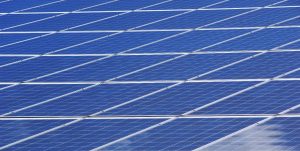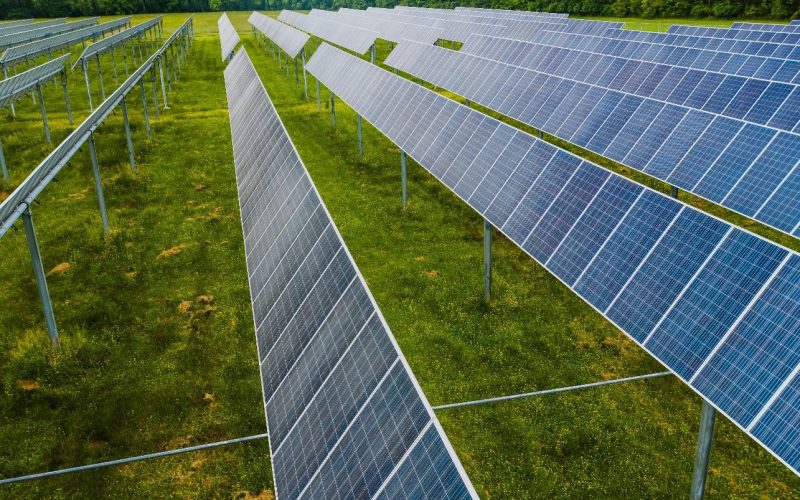Renewable Energy Products: Innovations and Trends
The renewable energy sector is rapidly evolving, driven by technological advancements, increasing environmental awareness, and a global push towards sustainable development. Innovations in renewable energy products are reshaping the landscape of how we generate, store, and use energy. From cutting-edge solar panels to advanced wind turbines and innovative energy storage solutions, the latest trends reflect a commitment to cleaner and more efficient energy sources. This article delves into the latest innovations in renewable energy products, their impact on the industry, and the trends shaping the future of sustainable energy.

Innovations in Renewable Energy Products
- Advanced Solar Panels
Recent advancements in solar technology have significantly increased the efficiency and affordability of solar panels. Innovations include:
-
- Bifacial Solar Panels: These panels capture sunlight on both sides, increasing energy yield and efficiency.
- Perovskite Solar Cells: These next-generation cells promise higher efficiency and lower production costs compared to traditional silicon panels.
- Flexible Solar Panels: Made from lightweight materials, these panels can be installed on curved surfaces and are ideal for a variety of applications, including portable solar chargers.
- Enhanced Wind Turbines
Wind energy technology has seen significant improvements in turbine design and performance:
-
- Vertical-Axis Wind Turbines (VAWTs): Unlike traditional horizontal-axis turbines, VAWTs are more compact and effective in urban environments with turbulent wind conditions.
- Floating Wind Turbines: These turbines are designed for deep-water installations, expanding the potential for offshore wind farms.
- Smarter Turbine Controls: Advanced software and sensor technologies optimize turbine performance and reduce maintenance costs.
- Innovative Energy Storage Solutions
Energy storage is crucial for managing the intermittency of renewable energy sources. Recent innovations include:
-
- Solid-State Batteries: Offering higher energy densities and improved safety over traditional lithium-ion batteries, solid-state batteries are becoming increasingly viable for large-scale storage.
- Flow Batteries: These batteries store energy in liquid electrolytes, allowing for scalable and long-duration storage solutions.
- Compressed Air Energy Storage (CAES): CAES systems use excess renewable energy to compress air, which is later released to generate electricity when needed.
- Hydrogen Energy Systems
Hydrogen is emerging as a versatile energy carrier with several promising applications:
-
- Green Hydrogen Production: Electrolyzing water using renewable energy sources to produce hydrogen with zero carbon emissions.
- Hydrogen Fuel Cells: Used in various applications, from powering vehicles to providing backup power for homes and industries.
- Hydrogen Storage Solutions: Innovations in hydrogen storage, such as metal hydrides and liquid organic hydrogen carriers, are improving the feasibility of hydrogen as a widespread energy source.
- Energy-Efficient Building Materials
The integration of renewable energy into buildings is enhanced by innovative materials:
-
- Solar Roof Tiles: These tiles incorporate photovoltaic cells into roofing materials, blending seamlessly with traditional roofing while generating electricity.
- Thermal Energy Storage: Materials like phase-change materials (PCMs) store and release thermal energy, improving the efficiency of heating and cooling systems in buildings.
- Smart Windows: These windows adjust their tint in response to sunlight, reducing heating and cooling demands.
Trends Shaping the Future of Renewable Energy
- Decentralized Energy Systems
The shift towards decentralized energy systems is transforming how energy is generated and consumed. Distributed energy resources (DERs), such as residential solar panels and small-scale wind turbines, are becoming more common. This trend is driven by advancements in smart grid technology, which allows for more efficient integration and management of DERs.
- Integration with Smart Technology
The integration of renewable energy products with smart technology is enhancing efficiency and user control. Smart meters, home energy management systems, and IoT-enabled devices are enabling better monitoring and optimization of energy use. This integration helps users maximize the benefits of renewable energy systems and reduce overall energy consumption.
- Increased Focus on Sustainability
As environmental concerns grow, there is a stronger emphasis on sustainability throughout the renewable energy sector. Innovations are increasingly focused on reducing the environmental impact of production processes, improving the recyclability of materials, and ensuring that renewable energy systems contribute to overall sustainability goals.
- Collaboration and Partnerships
Collaboration between governments, businesses, and research institutions is driving innovation in renewable energy. Public-private partnerships are funding research and development projects, accelerating the commercialization of new technologies, and fostering industry-wide collaboration to address common challenges.
- Regulatory and Policy Support
Government policies and regulations play a crucial role in shaping the renewable energy landscape. Incentives, subsidies, and mandates are driving the adoption of renewable energy technologies and supporting the development of new products. As policies evolve, they will continue to impact the pace of innovation and the growth of the renewable energy sector.
Competitive Table: Renewable Energy Products
| Product | Description | Key Features | Top Brands |
| Bifacial Solar Panels | Solar panels capturing sunlight on both sides | Increased energy yield, higher efficiency | LG, SunPower, Canadian Solar |
| Perovskite Solar Cells | Next-gen solar cells with high efficiency and low cost | Higher efficiency, lower production cost | Oxford PV, Tandem Solar |
| Vertical-Axis Wind Turbines | Compact turbines suitable for urban environments | Effective in turbulent winds, space-saving | Urban Green Energy, Helix |
| Floating Wind Turbines | Offshore turbines for deep-water installations | Increased offshore wind potential | Equinor, Siemens Gamesa |
| Solid-State Batteries | High energy density and improved safety | Longer lifespan, faster charging | QuantumScape, Solid Power |
| Flow Batteries | Scalable storage with liquid electrolytes | Long-duration storage, high scalability | Redflow, ViZn Energy Systems |
| Hydrogen Fuel Cells | Devices using hydrogen to generate electricity | Zero emissions, versatile applications | Ballard Power Systems, Plug Power |
| Solar Roof Tiles | Roofing materials with integrated photovoltaic cells | Aesthetic, energy-generating | Tesla, GAF Energy |
| Thermal Energy Storage | Materials that store and release thermal energy | Improved heating/cooling efficiency | Sunamp, PCM Products |
Analysis Table: Innovations in Renewable Energy
| Innovation | Impact | Challenges | Future Potential |
| Advanced Solar Panels | Higher efficiency and lower costs | High initial costs, manufacturing complexity | Broader adoption, improved efficiency |
| Enhanced Wind Turbines | Increased energy generation in various environments | High installation and maintenance costs | Expansion in offshore and urban areas |
| Energy Storage Solutions | Improved ability to manage intermittent renewable sources | High costs, technology development | Enhanced grid stability, lower costs |
| Hydrogen Energy Systems | Versatile energy carrier with zero emissions | High production costs, storage challenges | Potential for widespread use in multiple sectors |
| Energy-Efficient Building Materials | Improved building energy performance | High initial costs, integration complexity | Greater energy savings, reduced carbon footprint |
Conclusion
The field of renewable energy is advancing rapidly, driven by innovative products and technologies that promise to reshape how we generate, store, and use energy. From advanced solar panels and wind turbines to innovative energy storage solutions and hydrogen systems, these innovations are paving the way for a more sustainable and efficient energy future. As technology continues to evolve and new trends emerge, the renewable energy sector is well-positioned to address global energy challenges and contribute to a cleaner, greener planet.
By staying abreast of the latest innovations and trends, stakeholders can make informed decisions and support the development of next-generation renewable energy products. As the industry continues to grow and mature, the focus on sustainability, efficiency, and collaboration will be key to driving further advancements and achieving a sustainable energy future.












